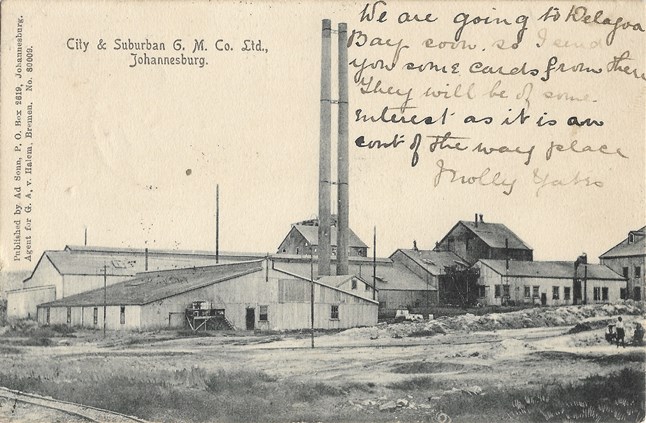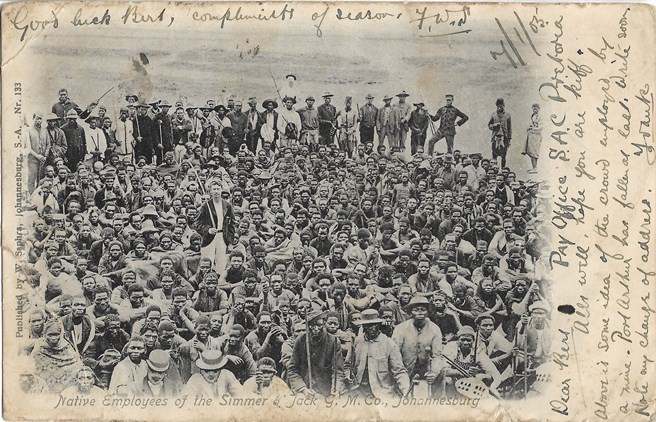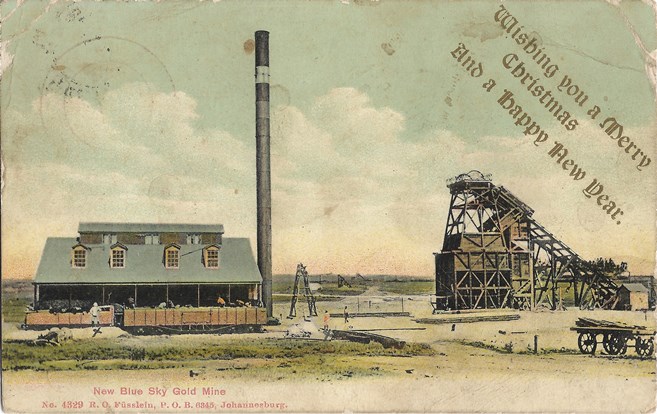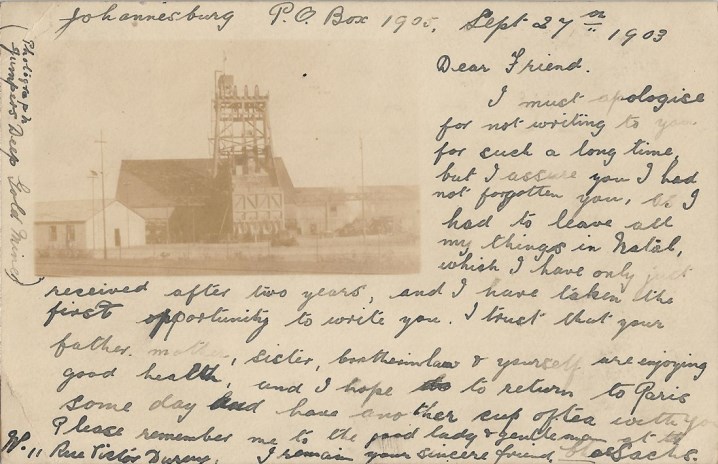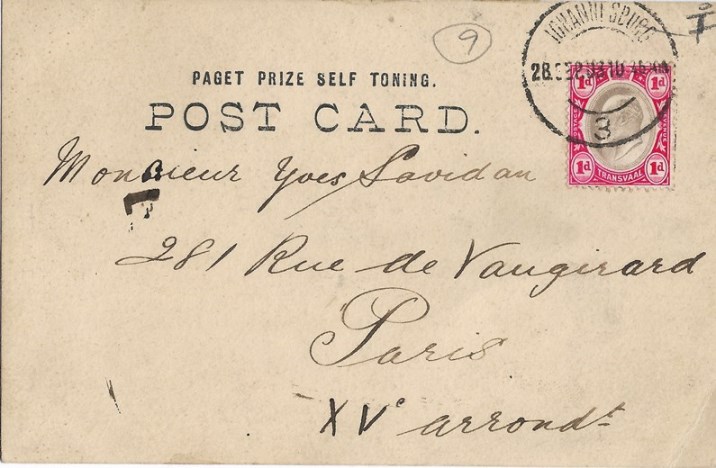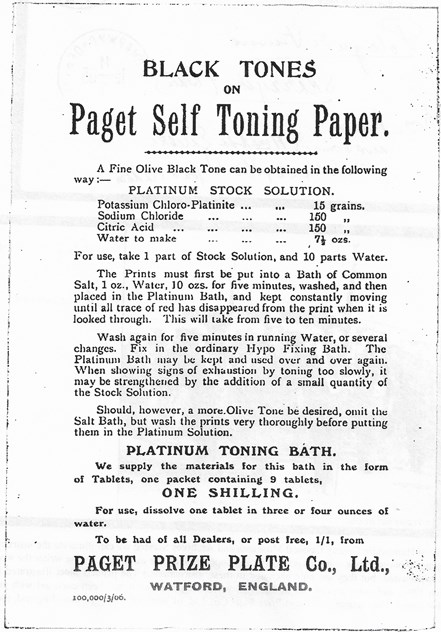TRANSVAAL PICTURE POSTCARD
MESSAGES ON MINING CARDS
RIGGERS & SAILORS
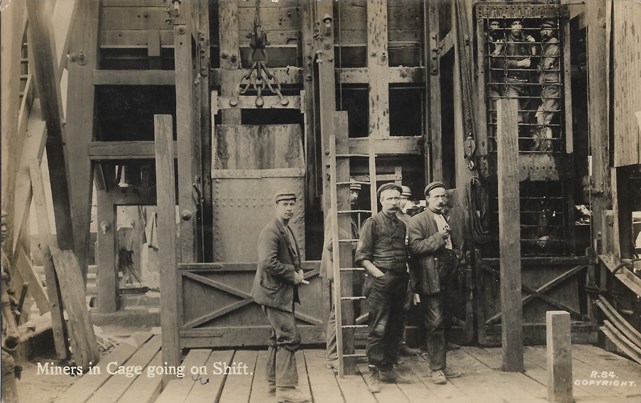
The Postcard
The caption is reversed out in white ‘Miners in Cage going on Shift.’ and ‘R.84. COPYRIGHT.’ It was published by ‘ “SAPCO” Real Photo, Box 5792, Johannesburg’ which is printed on the divided back (address side) in brown.There is no date given on this card, but it is probably circa 1912. It would appear that early cards published by this company have a lowercase ‘o’ for ‘Co’ hence ‘ ”SAPCo” ’ on the address side which is printed in black. On later cards an uppercase ‘O’ is used, hence ‘ “SAPCO” ’ but the address side is still printed in black. However, the address side here is unusually printed in brown.
More research of the 'South African Photo & Stereo Company' photographic cards is required. By studying postally used or manuscript dated cards, it may be possible to recognise variations in style between the years 1909 and 1912.
The Message
The technical message about Block and Tackle etc. may have been part of a serial message (on more than a single postcard) to someone, who was perhaps, about to come to work on this mine. There are few punctuation marks in the message and there has been no attempt to add any below.“This is a Three Compartment Shaft I am on this one this week You may have to make fast on of these skips in the incline shaft but you see there is plenty of room to fasten any thing around girders are around the skip and say you want to pull the rope off drum you fasten your rope to the frame of the shaft any where learn to make Knots of all kinds and you got the lot as its the main point the Riggers out here are mostly old Sailors run away from the ships at Cape Town we have not many Guide Ropes here they all run on wooden skids with shoes each side of cage Carpenters work. The Block and Tackle you see on the Frames is for Holding the Rope when changing skips for Cages to wind men” (sic.)
Note
Seems like a case of 'Old Sailors feel the wind and never put to sea’.
MAIN SHAFT ROBINSON DEEP GOLD MINE
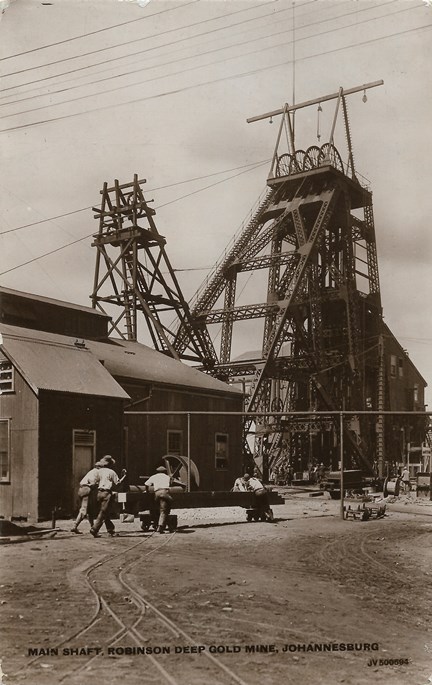
The picture postcard
The postcard is captioned ‘MAIN SHAFT, ROBINSON DEEP GOLD MINE, JOHANNESBURG / JV500594’. Published by Valentine & Sons Publishing Co., Ltd., / P.O. Box 1685, Cape Town. and on the divided back, it states ‘Photo printed in Great Britain.’ Addressed to "w. Newton Drew Esq, Raincliffe, Ecclesfield, nr. Sheffield", although it was not posted as a postcard and was probably sent in an envelope.
The message
"Eh ma Lad, Its now so bad. I might be in Pit heads & Barnsly, an all, dumps everywhere same as Smithy Wood only this is gold & not coal. I am told there are a big number of Yorkshire men at Vereeniging and there it is coal mining but not a black looking country. The place has a white population of 2,000 & coloured about the same number. Please excuse haste as I have a number more to write to. How goes the dancing, I expect you will have Agnes home soon after this arrives.Yours always ‘oly ‘ENR"
Note
The 'Smithy Wood Colliery, in south Yorkshire, first appears on the 1850 Ordnance Survey map. During 1904/5, ‘Smithy Wood Colliery was still a moderately small coal mine with a bank of coke ovens. Perhaps the writer here, as a young lad, did his apprenticeship at Smithy Wood and moved to the Transvaal after the South African War. Now on the Witwatersrand gold mines, the writer was probably experiencing problems. The last big depression was in 1904, which did not improve until 1906. However, the date of this message may be as late as the 1913 miners’ strike. It started in May when European miners declare a strike at the New Kleinfontein Mine, and industrial action spread to other mines. By July the miners were preparing to declare a General Strike, with some strikers beginning to arm themselves. Much damage was caused in the city and a number of shootings took place. Fatalities followed once the Army was call out.
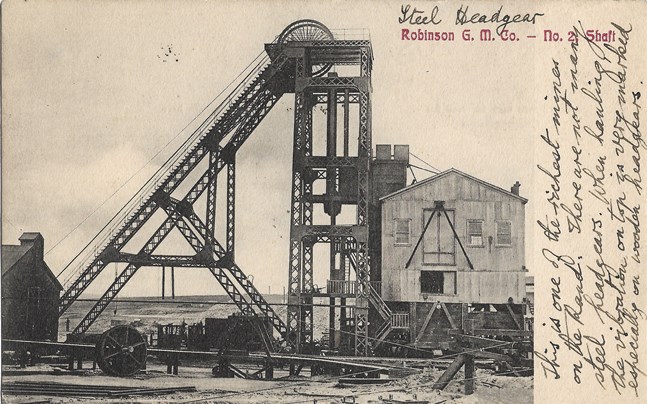
The message
“Steel Headgear”“This is one of the richest mines on the Rand. There are not very many steel headgears. When hauling, the vibration on top is very marked especially on wooden headgears."
The Postcard
The ‘P. S. & C.’ - Box 1470 - Johannesburg’ (Paul Schaefer & Co., (also Durban box no. 294 and Cape Town Box 1205.) is captioned in red ‘Robinson G.M. Co. – No. 2 Shaft’. The divided back (address side) in printed in green and it entered the post at Johannesburg on 21st September 1910 arriving at St Johns Wood in N.W, London during October.
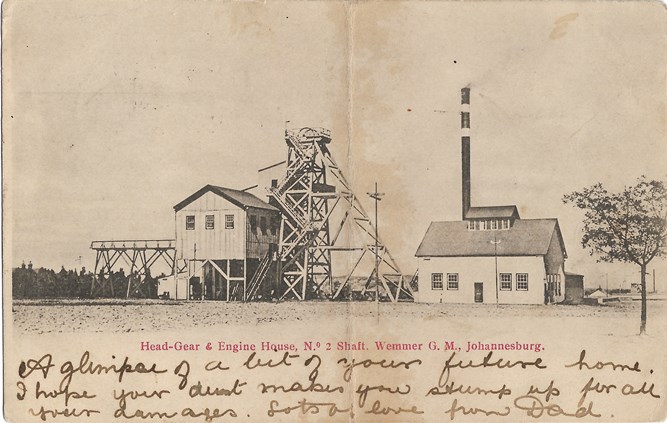
The message
A glimpse of a bit of your future home. I hope your aunt makes you stump up for all your damages. Lots of love from Dad.
The postcard
Unknown publisher but it may have been published in France or Holland.
The caption in red ‘Head-Gear & Engine House N.o 2 Shaft. Wemmer G.M. Johannesburg. It entered the post at Benoni on 12th November 1903. The double-circle datestamp in tied to a grey and carmine aniline ink, King Edward VII stamp. It was addressed to “Mr. R. Robinson, c/o Mr Millicen, 33 Stainsby Road, Poplar, London E, England.”
Note
This picture postcard in far from common.
CITY & SUBURBAN GOLD MINE CO. LTD.
